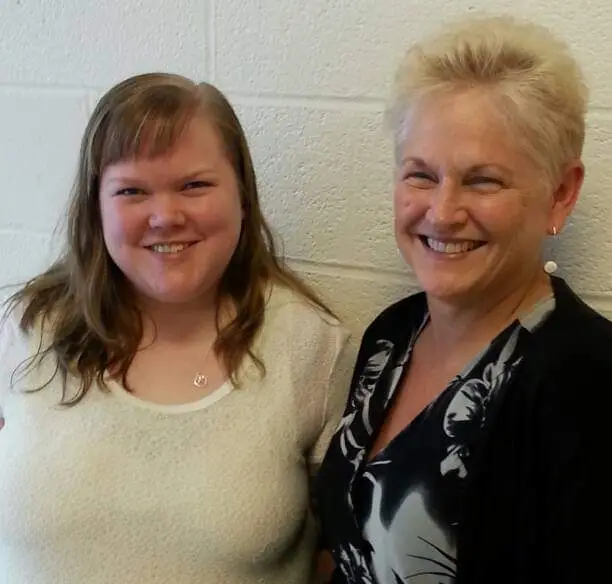NSPE chapter members share their perspectives on the impacts of COVID-19

The NSPE chapter committee asked Margie Taylor and Rhonda Sieniewicz to share their perspectives during the pandemic.
Margie Taylor
Coding and Classification Specialist in New Glasgow, NS
Written by the NSPE chapter committee
Margie Taylor is a Certified Health Information Management (CHIM) professional and coding and classification specialist who has worked in the health care field for almost 39 years at the Aberdeen Hospital in New Glasgow, Nova Scotia. She was a medical transcriptionist for 25 years before she shifted her focus to coding. Having spent so many years in health care, she has experienced many changes throughout the years—but never anything like the COVID-19 pandemic and the many restrictions that followed.
“The scary thing about working in a hospital during COVID-19 was trying not to contaminate yourself or anyone else,” she said. As the pandemic progressed, more and more restrictions fell into place within the office. Mask requirements were starting to be enforced when it wasn’t feasible to be six feet apart within and outside of the department, or for an immunocompromised individual who was unable to work from home and had to work in the hospital setting.
Working from home became the new normal. Colleagues packed up their computers and headed for home to endure what would be an indefinite time of uncertainty and change. Several coding classification specialists in Nova Scotia were already working from home, but for those who hadn’t worked from home before, it certainly was a new experience.
Margie’s morning schedule changed immensely. The usual morning commute of driving 3.5 km changed to walking a total of fourteen steps from bed to chair to get to the computer. She wasn’t yet in the mindset to just get up, turn on the computer, and start working—but instead had the mindset that she needed to get ready to face the day. This was usually a two-hour preparation, she said with a laugh. After working months from home, Margie realized all the morning fuss wasn’t necessary and she had saved a lot of time and energy (not to mention makeup!).
The work itself hadn’t changed, but the social aspect certainly did. Margie had to get used to working solo, which was especially challenging given that she came from an environment of women who exchanged questions, answers, thoughts, etc. throughout the day. Learning to communicate via Skype for business changed that aspect of work. Working from home had other challenges too. There were different distractions, such as telemarketer calls and knocks on the door, and it took some time to adjust to the setup of the home workstation, which was not ergonomically certified. Eventually, she was able to settle into a comfortable rhythm that worked.
Recognizing that she needed to get some physical activity back into her life, Margie added a daily walking routine to her schedule. “I look forward to getting out of the house at the end of the day to add some normalcy, especially being inside so much during the pandemic,” she shared. She also looks forward to chatting with family members via FaceTime. Margie has two sons and three grandchildren. “Having family members living in other provinces—Saskatchewan and Ontario—was worrisome at times,” she said. “Especially watching how quickly the pandemic spread across Canada.”
Margie’s final take on working from home with the pandemic: “At least something good came out of it. Instead of putting on weight, I took some off! A healthy body means a healthy mind, and keeping focused on the job is important—especially when you’re coding and abstracting hundreds of medical charts for the province.”
Rhonda Sieniewicz
Coding and Classification Specialist in Cape Breton, NS
Written by Rhonda Sieniewicz
Working in the new world of COVID-19 has made many changes for many people all around the world. Here in my small part—my work life has changed ever so slightly.
During the height of the first wave, there was a call from our public health department with a request for staff who could be deployed to provide the assistance they needed. Along with several other members of our provincial coding and abstracting team, I moved into a temporary position doing data entry of the information that nurses collected, which was used to monitor the individuals who were either confirmed cases or contacts of said cases. Epidemiologists used this information to help understand what was happening in the population of our province.
Because of my training as a health information management (HIM) professional, I was able to quickly adapt to the tasks assigned. Here in Nova Scotia, public health used Panorama to track the outbreak. I found the system very user friendly, so there wasn’t much of a learning curve to overcome. As data entry team members, we were supposed to be inputting the data that was collected and sent to us via spreadsheets—and it didn’t take long before we, as HIM professionals, wanted to improve the system. We found there were things that we wanted to tweak ever so slightly. The public health nurses were very receptive to our suggestions and before long, some of us were called on to audit previously entered information, in addition to ensuring the timely and accurate entry of the collected data. I can hear my coding instructor, Alana Lane, saying “garbage in, garbage out.”
Once Nova Scotia had a major reduction in cases and contacts, I was able to return to my regular duties of coding inpatient admissions. Other than having to familiarize myself with CIHI’s COVID Coding Directions, work life is pretty much as per the norm. I guess it is my ‘new normal’ since, in April, I picked up my computer and moved it to my home to work. I do miss the social aspect of working in the office; I miss saying “good morning” and “have a nice evening” to my co-workers because, as other coders know, what we do really doesn’t require a lot of interaction with others. There are also the added expenses I incurred to purchase office furniture and computer accessories to work from home—but in the big picture, those costs were negligible when compared to the costs that other families, who have been more directly affected by this virus, have had to sadly endure.
I do hope that we are never hit with a second wave. But if we are, I—like my friends and co-workers who were also deployed—will again be quick to raise a hand to volunteer to assist in any way I can.






